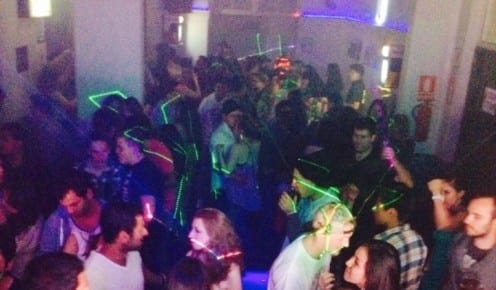Resurrecting and Remixing for Youtube Fame
By ucsanha, on 5 May 2014
The latest music craze here in Northern Chile is actually a song from 1993. Italian band Corona’s Rhythm of the Night has been stuck in the collective brain of young Chileans for the last two weeks. Though reading the song title or artist’s name might not immediately ring a bell for blog readers, the song reached number 11 on the US Billboard chart and number 2 on the UK singles chart for 18 weeks in the early 1990s. The song is admittedly catchy (to refresh your memory: the original music video on youtube ). But the circumstances of it’s recent popularity in Chile are both coincidental and very much due to a convergence of typically Chilean sociality and the ways social media functions in relation to Polymedia.
During the first week of April, a young man called into a radio station in the Dominican Republic and requested a song. In a classic misinterpretation of lyrics, he asked for a song with the lyrics “Esas son Reebok o son Nike” [Are those Reebok or Nike]. After a bit of back and forth discussion between the announcer and the caller, the disc jockey Brea realized he was referring to The Rhythm of the Night (though usually pronounced Nī-kē in English, most Spanish speakers pronounce the athletic brand Nīk), and happily played the song as he laughed at the misunderstanding.
Luckily some enterprising radio listener in the Dominican Republic was recording the interaction, and it quickly landed on Youtube. The “original” posting of the sound clip, accompanied by static graphic of Reebok and Nike logos, includes an explanation that the user received the sound file via Whatsapp and was so humored by it “I had to publish it” (hear the video). Hundreds of parody videos quickly appeared. From there it was picked up by Chilean radio stations, who began playing the sound clip along with the full version of the song. Chileans then did their own Youtube searches, which were quickly passed on through two popular Tumblr-like blog sites that generally publish links and photos pertaining to sex, drugs, drunkenness, humor, or some combination of the four. Among my over 100 Facebook friends in northern Chile, none published a link to the Youtube videos or sound files that circulated. Yet more subtle references popped up, such as the comment on a profile picture in which a pair of shoes is visible: “Esas son Reebok o son Nike?”
I didn’t understand these comments, and did not even notice them until April 10th, when I was invited to a cookout. As we waited for chorizo to heat on the grill, my friend Miguel asked if I had heard “Son Reebok o Son Nike.” Having no idea what he was talking about, a conversation equally as awkward as that between the radio announcer and caller ensued. But shortly, with his Samsung Galaxy phone in hand, Miguel played the radio clip for me. For the rest of the night, everyone was humming the tune. I found it the next day on Youtube and discovered it had almost 4 million views (compared to the original song’s less than 380,000 views). By the next weekend, when I went with some friends to a nightclub in Iquique, the entire dance floor erupted in screams of pleasure when the original song was played late in the night.
Clearly, this story illustrates the ways different forms of media, both online and offline, interact, and in fact depend upon one another to spread. The phenomenon started on the “traditional” media of radio, spread through personal Whatsapp message, was transferred to social broadcasting site Youtube, further spread through blog sites and word of mouth, and found it’s apex on a club dance floor. Rather than being eclipsed by Youtube or other online-based music platforms like Spotify or Soundcloud, music on the radio provides one way in which online music gains a hold. Users of Facebook and Youtube now take the place of radio disc jockeys in deciding what becomes popular. The content is both user-filtered and user-distributed. Yet, in taking on this role, comes the responsibility of being aware, and making others aware as well. If you don’t know why the song’s being played in the club on Saturday night, someone will be happy to tell you, and perhaps even show you the video, but not without a bit of social shame.
At the same time, there is something very Chilean about the importance of recognizing the song. Part of what’s being performed with screams of delight is not simply expressing that the song is good for dancing, but a performance of knowing why it is being played. A performance of being sufficiently socially connected, whether face to face (as I learned of the lyric misinterpretation) or via social networking, to sing along with “Son Reebok o son Nike” instead of “It’s the rhythm of the night.” Chances are, the song’s popularity will not last 18 weeks this time, but the song has found new exposure not only because it’s catchy, but because there is a story—and a funny one at that—that accompanies it.
 Close
Close





